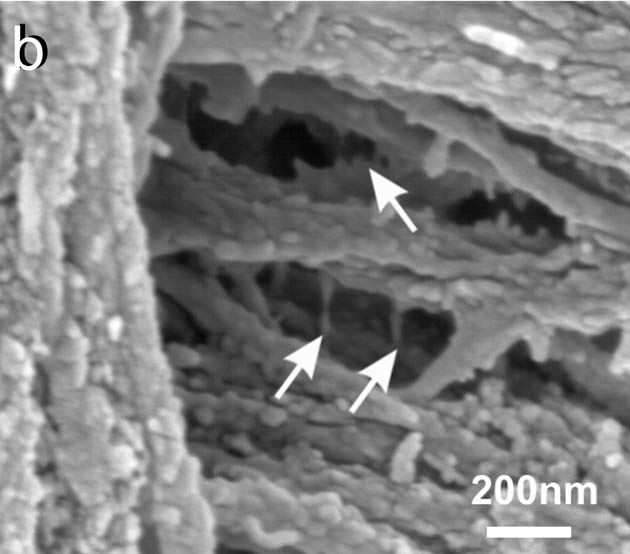Scientists Discover Healing Power of Bones

A new study of human bones reveals microscopic shock absorbers that hold healthy bones together under stress and help repair minor cracks.
The work could point to new therapies to reduce the effects of aging on bones and help fix broken bones.
The process, researchers said today, is the same as one they'd found previously in abalone shells, known to be among the toughest natural material possible.
Shock absorbers
Inside your bones are mineralized collagen fibrils, which are held together by an adhesive. That much was known.
In healthy bones, the glue contain springs of some sort that uncoil when the bone is stressed, which helps absorb shock, the scientists found in some of the highest-resolution images ever made of bones.
When the stress is over, the springs recoil back to normal.
Sign up for the Live Science daily newsletter now
Get the world’s most fascinating discoveries delivered straight to your inbox.
The newfound mechanism gives young, healthy bone tremendous resiliency and resistance to fracture, the scientists say. It also helps heal small cracks.
"The findings may lead to therapy for bone fracture, or even to prevention," said Georg Fanter, the study's lead researcher and a doctoral student in physics at the University of California, Santa Barbara.
"What we found is that there is a glue in bone that holds these mineralized collagen fibrils together, and this glue works along the same principles that our interdisciplinary research group found in abalone shells," said professor Paul Hansma, in whose lab the work was done. "This glue involves sacrificial bonds (with hidden length) that uncoil when the bone is stressed."
Therapies possible
Now that exact molecules have been identified with this mechanism, the researchers say, new diet or drug therapies can be designed for conditions such as osteoporosis, which is a severe deterioration of bone strength. Mineral density in human bones peaks around age 30 for all of us and declines through old age.
"If you don't know something is important then you can't do anything about it," Hansma pointed out. "This is a fundamental and new discovery in an old and well-studied field."
The study is detailed in the August issue of the journal Nature Materials and was published online Sunday.
"We're especially interested in learning how these molecules change and become depleted with age as well as in certain diseases," said Daniel Morse, another collaborator from the university. "A potential benefit from these discoveries is the prospect that we might now learn how to protect bone from these deleterious changes, and perhaps actually reverse some of the changes."










